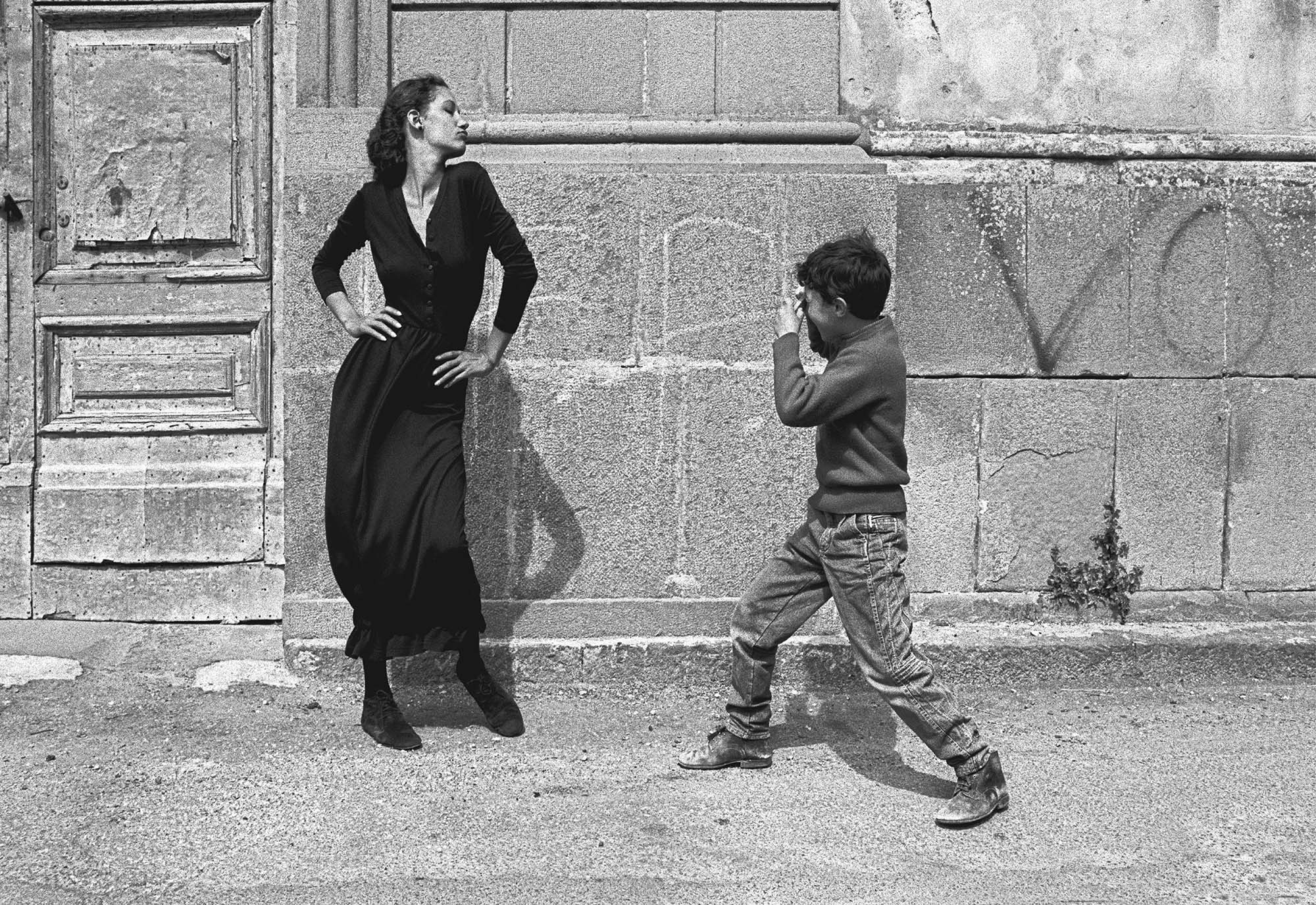La mostra
With over 200 black and white photographs printed in different formats, the exhibition Ferdinando Scianna, Viaggio Racconto Memoria spans the entire career of this great Sicilian photographer. It is divided into eight narrative sections, each devoted to different chapters and presented in different settings. In addition to some of his most important digitally reproduced books,
Read more
visitors will be led through the exhibition by an audio guide included in the admission ticket – and available in Italian and English –, where Ferdinando Scianna talks in first person about what photography means to him, telling stories and anecdotes about his career as a photographer and his life. A true parallel narrative, to get a close-up view of his artistic and human career. The exhibition, promoted and produced by Comune di Milano|Cultura, Palazzo Reale is organised by Civita Mostre e Musei. The catalogue is published by Marsilio Editori.
Biography of the artist
Ferdinando Scianna was born in Bagheria, Sicily, in 1943.
He began to take photographs of his native city when he was still very young, in the early sixties, telling about the culture and traditions of his homeland with his pictures.
Very early on, he decided to become a photographer, thus disrupting his parents’ projects who wanted him to be a lawyer or a doctor. The very first photos of the people of Bagheria, portrayed by Scianna with a curious and participatory tone, are loaded with intensity.
In 1961, he enrolled in Literature and Philosophy at the University of Palermo, while his passion for photography became more and more structured. He was a student of the great critic Cesare Brandi and showed his photos to Enzo Sellerio who helped him learn about Bresson’s cultural universe. During these years, his political conscience was being shaped, which, together with his bond with his homeland and Sicilian tradition, was key in the evolution of his photography.
About two years later, he met the writer Leonardo Sciascia, a meeting that would prove fundamental for his professional and personal life. Scianna was only 21 years old when, together with Sciascia, published the essay Feste Religiose in Sicilia, a book awarded with the prestigious Nadar Award. The book, highlighting the materialistic essence of religious festivals, and Sciascia’s texts in particular, created much controversy. However, the photos by a still young Scianna exerted a significant impact too.
Read more
“Photography was the possibility of telling a human story. My teacher made me understand this, by introducing me to a certain way of seeing things, of reading, of thinking, of placing oneself in the world”
On the strength of the book’s success, Scianna moved to Milan where he worked as a photojournalist for the Europeo, then as a special and news correspondent from Paris, where he lived for 10 years. While in Paris he also began to write with great success. He would write for several newspapers, including Le Monde Diplomatique and the Quinzaune Litterarie. “I happened to be writing more than photographing, but I knew I was writing as a photographer,” states Scianna. In the French capital, his work got special appreciation from Henri Cartier-Bresson, who in 1982 invited him to apply to join the Magnum Photos agency, which he had founded in 1947. Scianna went back to Milan and resigned from his job with the Europeo to fully devote himself to photography: “The agency is the tool of a group of independent photographers. The more you can use this tool, the better this organization capitalizes on your work. Magnum keeps surviving by following the egalitarian utopian tenets of its founders. Quite mysteriously, it manages to keep the most violent contradictions together”.
In Milan, he worked for various newspapers. He also started to photograph for two young emerging designers, Dolce & Gabbana. This was a casual meeting, which would lead to one of the most successful partnerships in fashion photography. Scianna was asked to create a catalogue by putting the beautiful model Marpessa in the context of his Sicily. Scianna managed to masterfully mix the visual registers of the fashion world with his photojournalist experience, thus creating an original result that breaks away from the glossy monotony of fashion photography. This success would lead him to work for prestigious international fashion magazines and create other fashion photo-services where he would skilfully combine fiction with authenticity.
This sudden and unexpected turn opened up Scianna’s photographic world to new experiences, in parallel to his more traditional photojournalism experience, namely advertising and commercial photographs. At the same time, he never neglected social reportage, portraits, and journalism:
“Now, with unchanged passion, fun and irony, I work in the most diverse fields. I do a bit of fashion, some advertising, reportage, and more than ever I try to make portraits. Also, I retrieve material from my photographic archives for numerous projects. In my exhibitions, I make no distinction between photos coming from my work as a photojournalist and fashion photos, for example. I arrange all of them seamlessly, which, at the end of the day, is what I do everyday in my work”.


